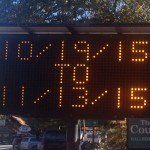University of California, Riverside, Assistant Professor of Geophysics Garreth Funning believes the seismic waves from one earthquake could trigger a second earthquake much farther away than previously thought.
Funning and his team studied two earthquakes in Pakistan in 1996 using radar imagery and determined that the first quake, a 7.0 magnitude, likely triggered a second quake 19 seconds later more than 30 miles away. The second quake registered 6.8 on the Richter scale.
Past research proved that seismic energy from one quake could affect related or nearby faults that were systemically connected, and produce more and related temblors. What’s new in Funning’s research is the distance factor — 30 miles without an intervening systemic connection.
Riverside and San Bernardino counties host a confluence of earthquake fault systems, many of them capable of generating significant magnitude quakes.
What Funning’s team’s research means for Southern California could be significant given the fabric of contiguous fault zones and long-distance faults like the San Andreas that are capable of producing massive earthquakes. The length, width and depth of faults are all factors in the magnitude of quakes faults can produce.
In interview, Funning was careful to state that his research is based only on thrust faults from the Pakistan study and that more research is necessary to determine if the same result (one quake triggering another at a distance of 30 miles or more) could be produced by strike/slip quakes. The San Andreas, San Jacinto and Cucamonga are all strike/slip faults.
“It’s certainly possible,” he said. “But a lot more work needs to be done to make that determination.” He also pointed out that remote triggering is more likely to happen when the remotely triggered fault is under significant stress. He explained that stress factors render a fault susceptible to influence from a rupture on another fault.
Funning noted that a thrust fault is present in the Inland Empire. The San Gorgonio Pass Fault runs though the Cajon Pass, where many fault zones, including the San Andreas, have tendrils. Funning’s research raises the possibility of some previously unanticipated scenarios should the southern section of the San Andrea rupture.
The southern section has been locked for more than 300 years, with stress building. By contrast, the central and northern sections have experienced massive quakes within the last 160 years — the Fort Tejon quake centered in Parkfield in central California in 1857 and the San Francisco quake in 1906 in the north. A massive quake on the southern section would be devastating, but even more so if it triggered another of similar size within the ranges that Funning’s study seems to indicate are possible.









